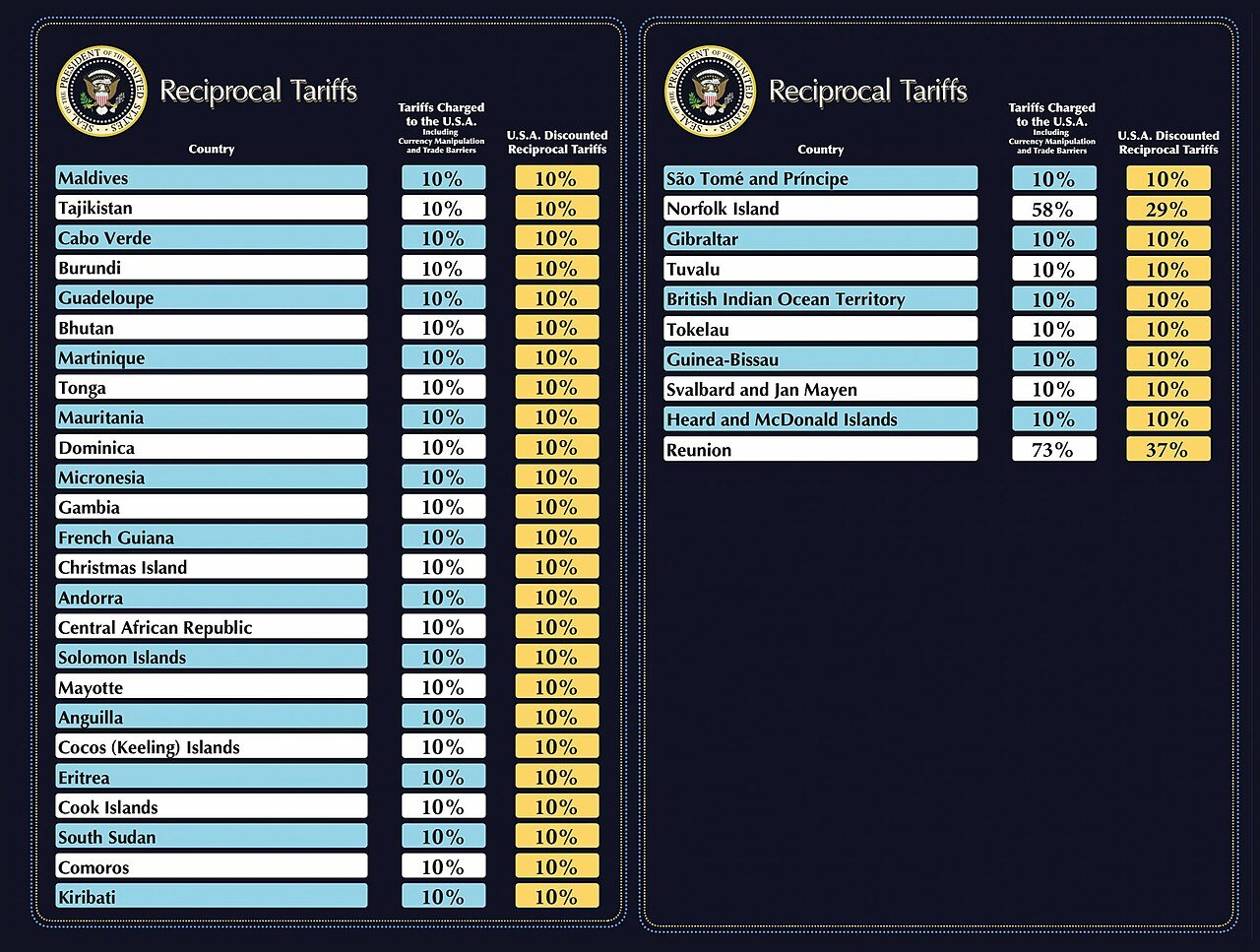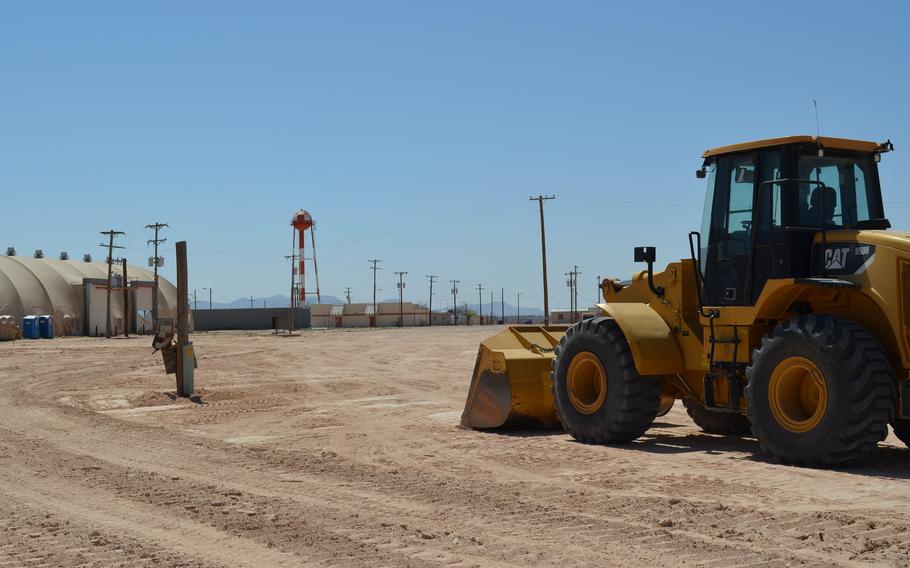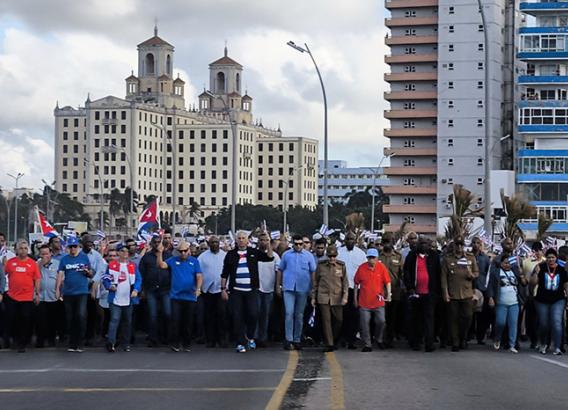Three Theses on Trump’s Rule
especiales

Preface: Emigre politics
When writers go into exile, I read somewhere, they discuss the politics of their former countries more than before they left. I have an image of that in my head – scruffy emigres huddled over coffee and schnapps in a smoke-filled café. Voices are raised, tables are pounded, and drinks are spilled, before a quiet settles on the group — the silence of displacement.
My writer friends here in Norwich are all British, and they don’t go in for fist pounding. Their take on American politics is mostly expressed in eyerolls and feigned shock. They always knew, they seem to be saying, there was something terribly the matter with the U.S; now it’s wrongs are laid bare. “You’re the American,” they say, “what do you think?” In the quiet that follows those conversations, I don’t feel displaced, just a little nauseous.
1. Fascism is embarrassing
The press and liberal politicians have responded with suitable alarm to the Trump administration’s attacks upon education, the environment, law, non-profits, immigrants, the economy (tariffs) and the courts. They have described violations of due process, and the threat of authoritarianism. They have predicted recession, inflation, or stagflation, and warned about the costs to the nation–material, intellectual, cultural-of the deportation or exclusion of immigrants.
Trump’s onslaught has been relentless, and no one is safe. If legal residents – immigrants and students – protected by the first amendment, are subject to deportation because of their speech, so are birthright or naturalized citizens. If law firms are punished for their selection of clients, no one can be confident of obtaining legal representation when they need it. If research scientists can have their funding cut for ignoring Trump administration priorities, then nobody can be sure public health and safety are protected; if non-profits are targeted for their charitable work, how many people will step up to fill the gaps left by a tattered social safety net?
Just before the 2024 election, the words fascist or Nazi were beginning to be used by Democratic politicians – including Joe Biden and Kamela Harris – to describe Trump. Those terms have now largely disappeared from public discourse. The savants say they were politically ineffective, turning off the very voters who most needed to be engaged. There’s no evidence to back up those claims. I think the real reason is different: the wolf at the door has taken up residence in our living rooms, and that fact is simply too shameful to acknowledge. A majority of American voters freely elected a fascist, an approbation even Hitler never received. What’s more, they elected a congress willing to disable itself to enable him. Who would want to admit such things?
2. Universal tariffs — a Hitlerian policy
Since inauguration, Trump has done everything he can to cement his power. That’s what dictators do. In Hitler’s time, the process was called Gleichschaltung, meaning stabilization or bringing into alignment. The Reichstag (parliament), the courts, businesses, education, law, unions, the police and military, and the organs of civil society, including charities and arts organizations, were all made to toe the Nazi line. Many did so willingly. Those that didn’t were steamrolled or destroyed.
Hitler accomplished Gleichschaltung in a matter of months. Trump has been in office just four months and has already managed to dismantle entire government agencies and subvert well-established consumer, investor, civil and environmental protections. He has disbanded U.S.A.I.D., the government’s largest provider of foreign aid, and brought to heel some of the nation’s biggest law firms and a few of its wealthiest universities. It’s a veritable Anschluss, and as with Austria, those who accede to the dictator will remain in his thrall for as long as he’s in power. Trump has been less successful so-far, however, in accomplishing what got him elected: improving the economy by reducing prices.
Trump’s economic policies appear at first glance conventional. By embracing the budget framework put forward by the U.S. House – which slashes about $1.5 trillion in spending — Trump plants himself firmly in the camp of austerity. That’s the policy of every Republican since Herbert Hoover. The theory behind it is roughly as follows: Cut spending to reduce the supply of money and lower inflation and interest rates. That makes it easier for businesses to borrow to invest in new enterprises and produce more goods and services. That in turn, increases hiring and raises salaries (because of competition for workers) and improves the general welfare of the nation.
In fact, austerity never works like that. Cuts in spending reduce both employment levels and the social safety net, disempowering workers, and emboldening businesses to lower salaries. Eventually, a lack of consumer demand idles factories and services, propelling the economy into recession. The crisis can be long or short, depending upon outside forces available of to stem the crisis – war or militarization, a major government stimulus, a large increase of credit, or a paradigm changing technology. Under monopoly capitalism, as Paul Sweezy wrote, “stagnation is the norm, good times the exception.” In recent years, the economy has been propped up by enormous profits in the financial sector, but little of that has trickled down to the mass of the population; thus, the continued anger and disillusionment of the American working-class, comprising 70% or more of the population. (The working class consists of those who live on salary alone, paycheck-to-paycheck, not investments).
By firing thousands of federal workers and shuttering whole agencies, Trump is a typical austerity-loving Republican. (That despite stuffing the White House with gold-plated bling.) His vow to cut taxes for the wealthy – even though that would vastly increase the deficit – is also standard Republican fare. It’s always the poor, not the rich, who are forced to accept austerity. But where Trump parts ways with Republican orthodoxy is his plan to achieve economic autarchy (self-sufficiency) through tariffs. His model here isn’t so much President McKinley, Trump’s favorite president, as Adolf Hitler, with whom he also has a relationship.
A tariff is a duty or tax on an imported good. They have been used for millennia, mostly for corrupt purposes, such as increasing the wealth of a ruler or raising funds for wars of conquest. As early as the 15th century, however, tariffs were used for more benign, or at least more rational reasons: import substitution. Successive English monarchs taxed imported woolens so that domestic producers could gain a bigger share of the market. Indeed, because of tariffs – plus a large navy — England ultimately gained global dominance in cloth manufacture and sale. The English Corn Laws (1815-46) too were a set of tariffs intended to protect British manufacture and trade. They prevented the importation of grain, raising the prices of domestic products and enriching landowners. However, they also increased food costs, exacerbating starvation in Ireland (under English control), and antagonizing manufacturers forced to pay their workers higher wages.

Some of Trump’s “reciprocal” tariffs, April 2, 2025. Photo: Wikimedia Commons.
The goal of Trump’s tariff program is something like Britain’s – empire building, or in this case, empire repair. American global dominance has been in decline for a generation, and China is now the world’s leading manufacturer (by far) and the leading trading nation. A closer parallel than imperial Britain, therefore, is Nazi Germany. When Hitler came to power in 1933, he faced an economic crisis. His country was deeply dependent upon imports – especially oil, rubber, animal feed and fertilizer – but lacked the export income to pay for them. In addition, Germany still owed significant war reparations to the United States — those to France and England had already been cancelled. Hitler’s policy therefore, devised by his economic minister Hjalmar Schacht, was to abrogate remaining reparations agreements, embrace tariffs to prioritize exports over imports, and pursue relative autarchy — “a selective policy of disengagement,” as Adam Tooze called it — with its chief trading partners, including the U.S. The roll out of this program was fraught with challenges, but it ultimately allowed the Nazi regime to rapidly re-arm while at the same time boosting the domestic economy. Germany achieved full employment by 1938 with the significant exception of Jews forced from their jobs by the repressive Nuremberg Laws. By 1940, labor shortages began to arise, quickly compensated by slave labor performed by Jews and war prisoners. In the end, of course, Hitler’s economy could not sustain such a massive war effort against the combined forces of the U.S. and US.S.R. and by the spring of 1945, it was decisively defeated.
Like Hitler, Trump is focused on disengaging from historical trading partners – Canada, Mexico, the EU, U.K., Japan, Soth Korea and China — and achieving relative autarchy. He wants to strengthen American imperialism, and expand the American Lebensraum to include Canada, Greenland and the Panama Canal. His chief economic target is China, which he’s hit with tariffs as high as 145%, but every nation in the world (including non-nations, like the Heard and McDonald Islands, inhabited only by penguins) are subject to tariffs in an effort to reduce foreign dependency, increase domestic production, and raise money.
Tariffs of the kind currently implemented or proposed, make no economic sense and have no chance of either heading off stagnation or restoring lost dominance. If Trump wants to raise enough money from tariffs to cut or eliminate income taxes, he’s bound to fail since rates high enough to pay for U.S. government services and spending will quickly reduce imports, cutting off the very revenue tariffs are supposed to raise. If his goal is instead to use tariffs to foster domestic manufacturing (import substitution), he must fail since imports – raw materials, silicon chips, machine parts and exotic food items (such as avocados) – are essential to U.S. business expansion and consumer spending. China’s retaliatory threat to cut-off U.S. access to essential rare earth elements is one example of the necessity of imports.
Finally, the underlying premise that high tariffs always buttress American prosperity is fundamentally flawed. Consider the following thought experiment:
The Chinese government, in “an expression of love for the great American people”, decides to give to every American adult an electric car worth about $50,000. The U.S. government at first thinks this is a Trojan Horse, but after examining a thousand cars sent as a downpayment, discovers there are no booby-traps or listening devices. The American public rejoices. Car manufacturers and the U.A.W. are furious.
Question: What should the U.S. do?
Answer: Take the cars.
If the Chinese people want to dispense raw materials, capital and labor with a value of $50,000 – we’d be idiots to turn it down. The cars would increase the net worth (as well as mobility) of American adults, allowing them to buy other goods and services. They would stimulate the economy and greatly reduce the emission of greenhouse gasses. There would be a rush to build charging stations and electric generation to power them, and lots of scrap metal to make new steel. If some auto workers lose their jobs, they can be employed in industries juiced by the $1.25 trillion Chinese gift. The U.S. government can support workers with the transition.
Now suppose the Chinese only offered the value of one-half, one-third, or even just one-tenth of a car? The answer must be is the same – take the money. Turning down cheap Chinese and other imports is the equivalent of turning down the car, so long as the goods are sold at prices below the global, average necessary labor time required for their production. (For model calculations, please see Zhming Long, et al. Also Larry Summers.)
This hypothetical transfer of resources is not in fact, exceptional; it is the basis of Imperialism. In the 19th and 20th centuries, the expropriation of colonial resources and exploitation of people enriched the metropolitan powers, including the U.S. The difference today is that many, so-called “developing” countries self-exploit to establish domestic industries sufficient to move their populations out of extreme poverty. Moreover, they accept as payment for their goods dollars used to buy American products or U.S. Treasury bonds. China is the greatest example of this self-exploiting practice, but its willingness to continue is being tested right now. It may decide to simply accelerate existing plans to increase domestic consumption in pursuit of a long-term policy of “de-globalization” and “co-development.”
In the face Chinese push back, Trump’s protectionist and Hitlerian trade policy is ludicrous. His plans to impose further tariffs on computer chips and pharmaceuticals, or even charge nations to trade with the U.S will, if implemented, speed the coming recession, or deepen it when it arrives. The only plausible way to ameliorate the declining fortunes of the American working class are the ones that Trump and other Republicans (and most Democrats) have ruled out from the start: subsidize or nationalize industries key to a sustainable, green economy; restore high marginal tax rates, like those in effect from 1944-63; tax wealth to reduce inequality; support the growth of labor unions to ensure fair wages; clip the wings of the non-productive finance sector by imposing fees on stock trades; limit patent protection; and establish good, non-coercive trading relationships with other nations.
2. Trump aims to punish immigrants to validate his racism
Trump’s tariff policy discomfits allies and adversaries alike. His capriciousness – tariffs raised one day and lowered the next — is not a flaw in his system, it’s the purpose. By controlling with a word or a tweet the rise and fall of global markets, or a nation’s trade and monetary policies, Trump manifests his dreamed omnipotence, the product of a narcissism that’s Hitlerian in scale if not so far in impact. The pathology is not limited to the economic domain. It’s also apparent in immigration policy, the other issue that got him elected.
During the presidential campaign, Trump called immigrants from non-European countries murderers, rapists, diseased, vermin and blood poisoners, language borrowed from Hitler, Himmler, Goebbels and other Nazis. He proposed arresting and expelling twenty million of them (even though there are only about 11 million undocumented workers in the U.S.) and building an archipelago of camps to facilitate the process.
Trump is not alone in his extremism. He’s supported by a vast organizational and personnel infrastructure that includes anti-immigrant think tanks, “English only” advocates (a policy recently advanced by executive order), and opponents of diversity and educational multiculturalism such as Christopher Rufo. Among Trump’s most committed individual allies, naturally, is his vice-president, former Ohio Senator J.D. Vance, who infamously claimed that Haitian immigrants in Springfield, Ohio were eating resident’s pets, and last week stated, prior to his visit to the Vatican, that the U.S. Conference of Bishops was settling “illegal immigrants” just to collect federal aid. (A rumor is growing that Vance killed the pope. I have no evidence to prove or disprove the claim.)
Many other prominent Republicans, including Texas Governor Greg Abbott, Florida Governor Ron DeSantis, House Speaker Mike Johnson, Arkansas Senator Tom Cotton and Homeland Security advisor Stephen Miller have expressed similarly hateful views.
Miller in the past endorsed openly racist, online publications such as VDARE and American Renaissance and recently demanded “reparations” for all the damage done to U.S. families by “uncontrolled, illegal, mass immigration.”
Lately, Trump has moved away from Nazi-inspired, biological racist language to a rhetoric that focusses instead on public safety. He’s accused large numbers of Latin American immigrants of being members of the Venezuelan gang Tren de Aragua, and the El Salvadorian gang MS-13. That was the pretext used to deport about 200 immigrants to a notoriously brutal prison in El Salvador. Few if any of the deportees were afforded due process, and most are neither gang members nor in fact guilty of any crime. (Under federal law, being undocumented is a civil, not criminal offense.) The case of Kilmar Ábrego García, a Venezuelan legal immigrant, deported due to an “administrative error” according to the government, remains the focus of intense interest. Despite a Supreme Court judgement that the U.S. must “facilitate” his release, he remains in prison. Further deportations to El Salvador are currently blocked by a Supreme Court order.
In late March, work was begun on an immigrant detention center at Fort Bliss, in El Paso, Texas. It will hold about 8,000. (Biden previously housed an unknown number of unaccompanied migrant children at Fort Bliss.) The camp would be a model for about ten others at bases across the country from Niagara Falls Air Reserve Station near Buffalo, N.Y., to Hill Air Force Base in Utah. Assuming all are built – an unlikely prospect given the coordination and focus required — that would mean that 80,000 immigrants could be housed in camps, awaiting processing, a small fraction of the promised 20 million deportations.
In fact, Trump has so far detained and expelled fewer immigrants than Biden at the same point in his term. The reasons are both banal and programmatic. Trump fired most of the people at the Department of Homeland Security who knew what they were doing. But more important, Trump recognizes that any program of mass expulsions would be devastating to the American economy. At least 40% of U.S. farmworkers are undocumented; 31% of workers in the hospitality sector; and smaller but still large percentages in health care and construction.

Site Monitor, Fort Bliss, April 10, 2025. (Photo: Rose Thayer for Stars and Stripes (U.S. Department of Defense).
Another focus of racial and xenophobic bias is college students. Trump’s Department of Homeland Security has expanded its scope to arrest legally resident, but foreign-born students. Many of them – around 1700 so far, but possibly many more — have been involved in pro-Palestinian or anti-Israel protests. Others have had their visas revoked for minor legal infractions, including speeding tickets, or for having been charged, but not convicted of misdemeanors. These students are not however immigrants at all; they are recipients of U.S. educational exports. Foreign-born students collectively add almost $45 billion to the U.S. economy and support almost 380,000 jobs, about ½ the impact of the U.S. auto industry. The improve the U.S. balance of trade.
The point of Trump’s detentions and expulsions is not to end immigration, or even significantly reduce its numbers. It’s to stigmatize immigrants and non-whites, thereby validating the national and racial superiority of the president, his allies and supporters. Still more broadly, it’s to affirm the naturalness and inevitability of a political, economic and social system – challenged by developing nations, allies and rivals — in which the United States occupies the center of the global order. By his actions on tariffs and immigration, Trump is inadvertently hastening the end of that dominance. For that we can thank him. But what will be the cost?
Stephen F. Eisenman is emeritus professor at Northwestern University and Honorary Research Fellow at the University of East Anglia. His latest book, with Sue Coe, is titled “The Young Person’s Illustrated Guide to American Fascism,” (OR Books). He is also co-founder and Director of Strategy at Anthropocene Alliance. He can be reached at s-eisenman@northwestern.edu














Add new comment